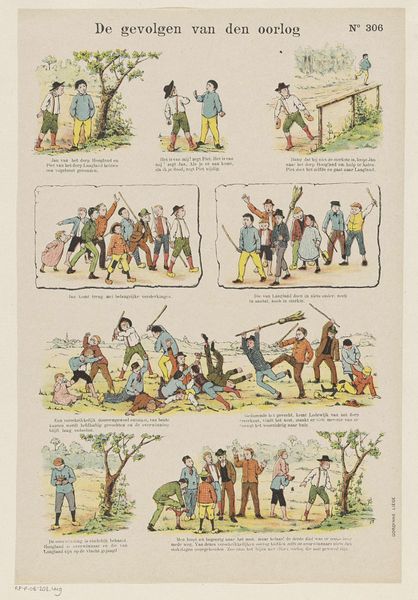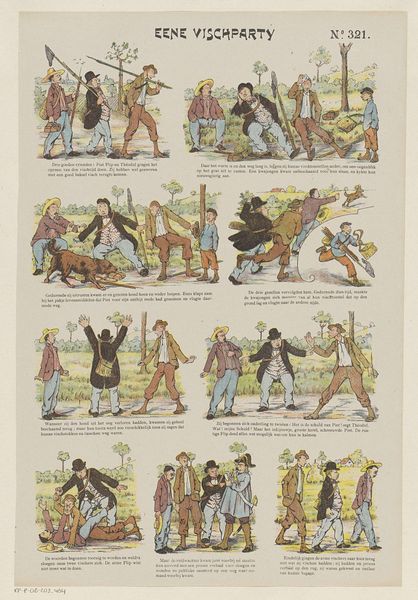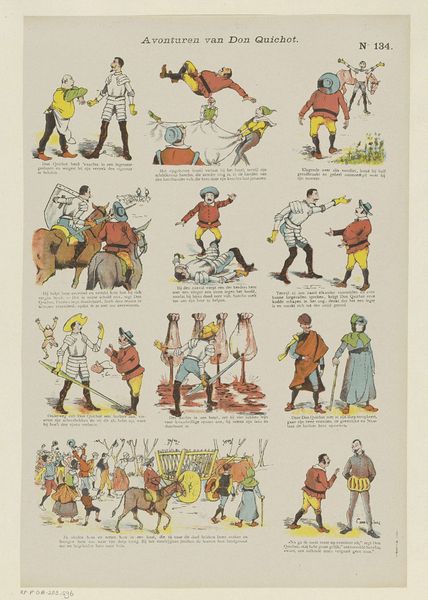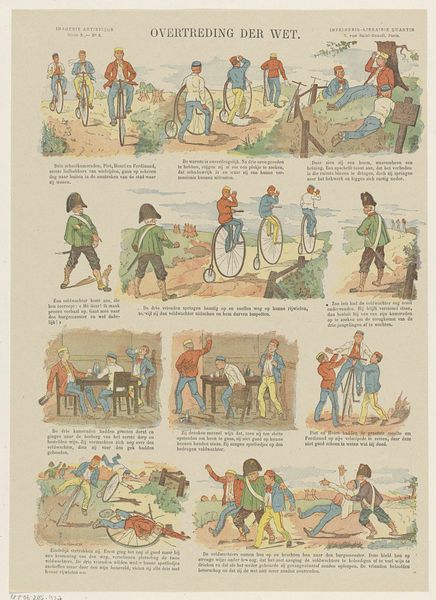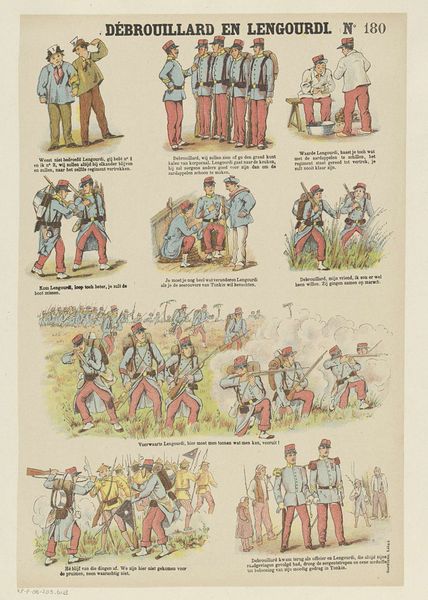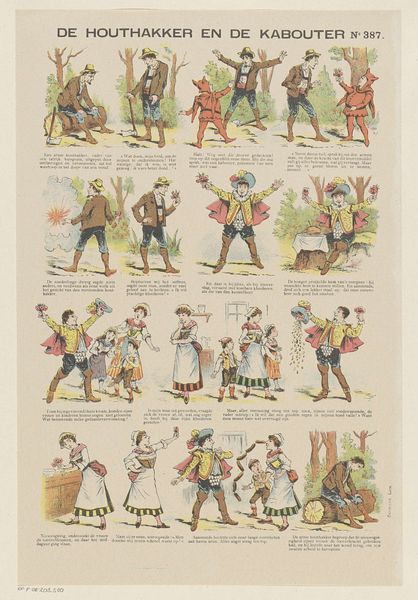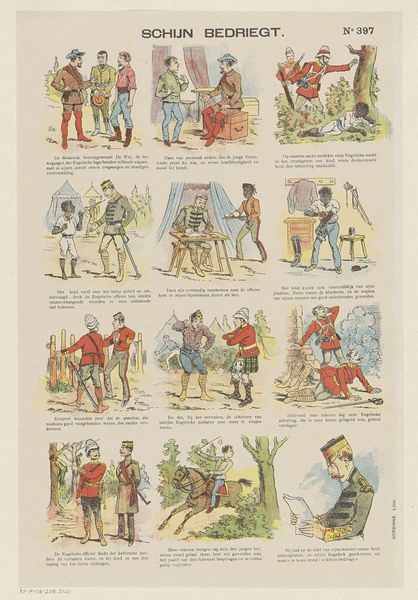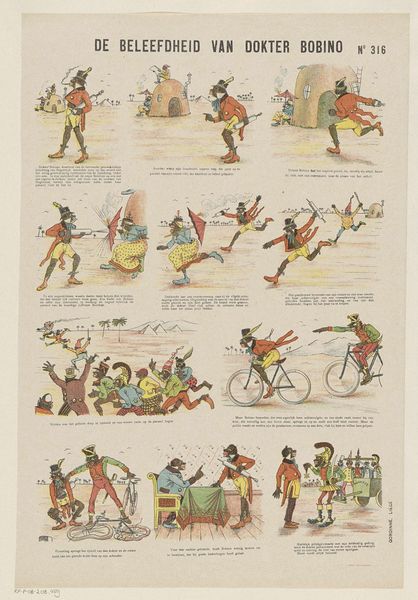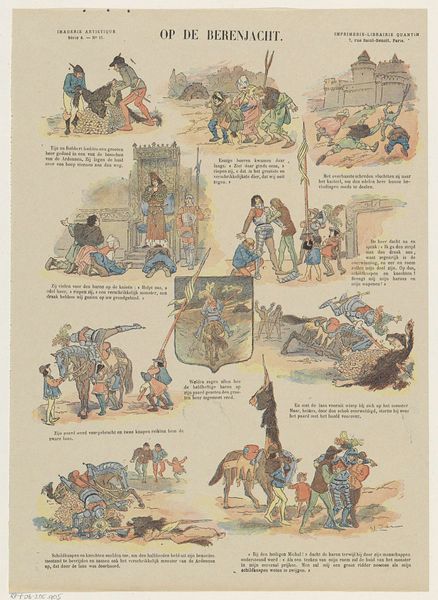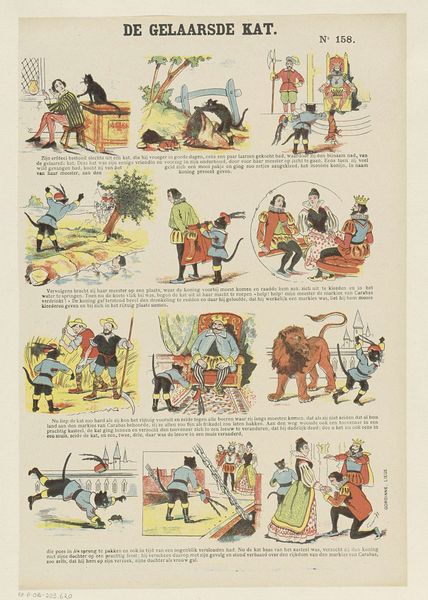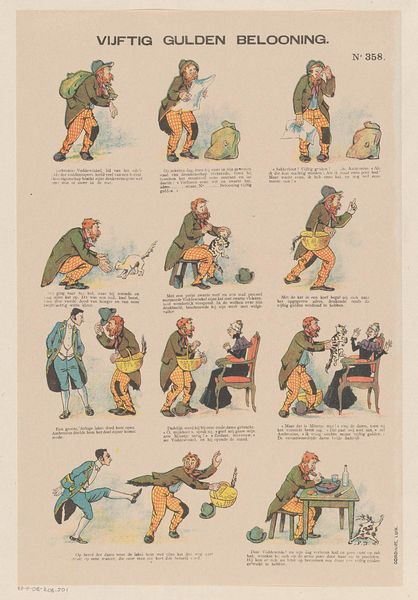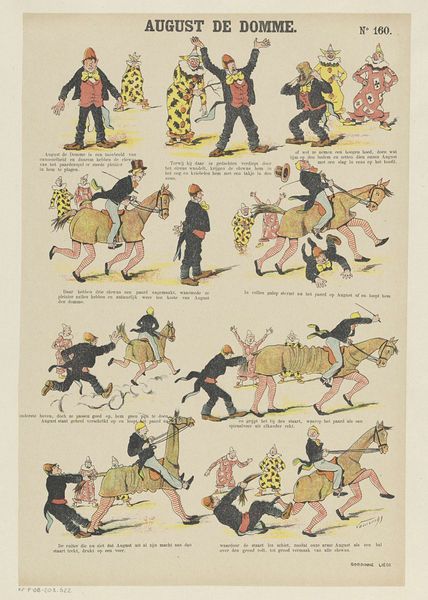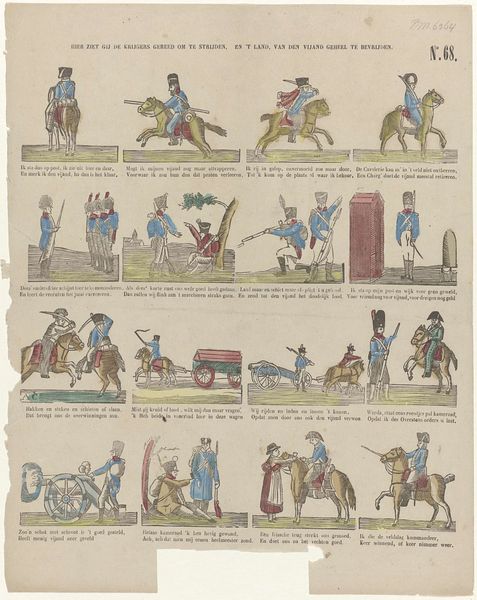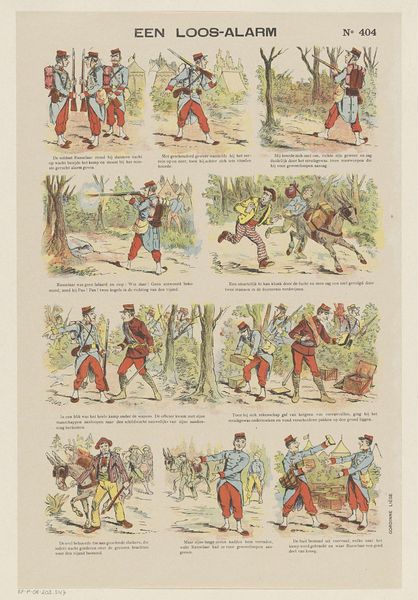
drawing, graphic-art, print
#
drawing
#
graphic-art
#
narrative-art
# print
#
caricature
#
comic
Dimensions: height 399 mm, width 271 mm
Copyright: Rijks Museum: Open Domain
Curator: Lamouche's "Het Eerekruis," dating from 1894 to 1959, is a captivating print, now housed at the Rijksmuseum. It blends drawing and graphic art to create a compelling narrative, tinged with caricature and comic sensibilities. What strikes you initially? Editor: The way this piece seems to oscillate between grim narrative and pure playfulness really intrigues me. The panels seem to cascade downward like some morbid set of dominoes, it's really a captivatingly dark vision, though I think many people probably wouldn't notice right away because of how stylized everything is. Curator: It’s quite striking. Observe how Lamouche employed the graphic medium— likely wood engraving or lithography given the period— to reproduce the crisp lines and flat areas of color. The standardization inherent in printmaking made such works accessible, fostering their role in disseminating political commentary to a wider audience. How might that bear on the meaning of all of those violent depictions? Editor: Absolutely, it serves as a visual chronicle of its time. Considering the symbols—soldiers, Napoleonic imagery—we can interpret the cartoon's frames, seemingly arranged on the picture plane with no unifying pattern as all relating to power structures of 19th century Europe. This work definitely strikes me as the cynical interpretation of honor and the brutality that's usually hidden behind ideas of duty. Curator: And this cynical commentary— I wonder about the audience’s reception. Consider the conditions of production. Printmaking, unlike painting, allowed for mass reproduction. The labor involved, the distribution networks, all impacted how these ideas were received. Was this a tool for subversion or a reflection of existing societal critiques? Editor: It’s the visual language itself that truly resonates with the viewer. Think of the repeated soldier motif throughout history— a visual shorthand to indicate power and the willingness to violently defend that power, regardless of the implications on the lives affected by such action. Lamouche clearly feels similarly, it comes through clearly. Curator: A powerful distillation of national pride's messy entanglement with social consequences. Editor: Indeed, offering a potent reminder of the complex interplay between the visual narratives and historical forces shaping a population's ideals, real or fabricated.
Comments
No comments
Be the first to comment and join the conversation on the ultimate creative platform.
